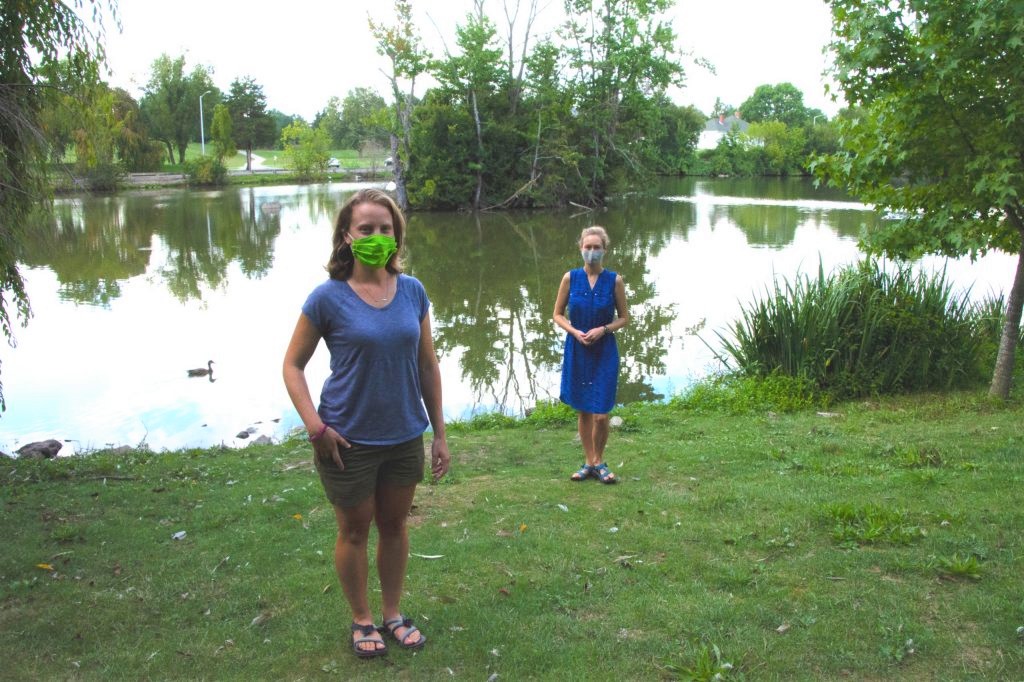
A recent study from the Virginia Tech Department of Biological Sciences shows that the negative effects on clear water lakes from climate change and land development can be mitigated by limiting nutrient pollution in the lakes.
Scientists have long known that clear water lakes are in danger from land development, pollutants, run-off from storms, and climate change because of increased nutrient pollutants that
.lead to algae blooms.
Algae, of course, are a critical part of lake food webs and the zooplankton that eat them. But too much algae in lakes can cause scums on the water, blocking out sunlight for other life in the lake. When the algae die and decompose, they release more nutrients, which can cause even more algae blooms.
“High nutrient pollution can come from many sources: fertilizers and sewage waste are some of the worst sources of nutrient pollution, as far as having the highest concentration of nutrients,” said Nicole Ward, a doctoral student in biological sciences, part of the Virginia Tech College of Science, who led the study.
Ward worked on the study, recently published in the journal Water Resources Research, alongside mentor Cayelan Carey, an associate professor of biological sciences, Kathleen Weathers, a scientist at the Cary Institute of Ecosystem Studies, in addition to collaborators at Dartmouth College in New Hampshire, Bates College in Maine, and the University of Wisconsin-Madison.
The nutrients Ward and Carey refer to are nitrogen and phosphorus – essential building blocks for life, found in DNA, cells, bones, and energy sources. In freshwater systems, the number of organisms living in the water is dependent on the availability of nitrogen and phosphorus. That’s a double-edged sword.
Erosion and landslides also transport nutrients. Phosphorus is generally bound to sediment particles, so as sediment enters the water it is bringing phosphorus with it,” Ward said. “So, when we add more nutrients, we can really quickly see a lot more life – which seems like a good thing, right? But too much of a good thing is not good. So, we get huge algae blooms with high nutrient pollution, this can cause scums on the water, potentially harming plants and fish.”
And there’s another issue: “When the algae inevitably die, their decomposition uses up the oxygen in the water, killing organisms in the water that need oxygen,” Ward added.
Further, Ward and Carey found that the negative effects of land use and climate change on a lake depend on if yearly maximum or average phytoplankton concentrations are studied. Average phytoplankton concentrations, during typical summer conditions, show an increase with either warmer air temperatures or higher nutrient pollution. However, annual maximum phytoplankton concentration – or blooms – only increase with higher nutrient pollution.
In the study, Ward and Carey wrote, “Typical summer phytoplankton concentrations will likely increase with warmer air temperatures due to climate change alone and increase even further when combined with higher nutrient pollution. To maintain clear water lakes, nutrient pollution should be reduced even more than previously thought to compensate for increasing phytoplankton in a warmer climate.”
The study focused on Lake Sunapee in New Hampshire, located near Carey’s alma mater, Dartmouth. It was chosen for its pristine water quality and rural location.
The lake also has a goldmine of data thanks to the hard work of the nonprofit, community-operated Lake Sunapee Protective Association. It has 31 years of water quality data, including statistics from a high-frequency buoy monitor that has collected data at 15-minute intervals since 2007. Ward called the group and its data set “critical” to the study.




